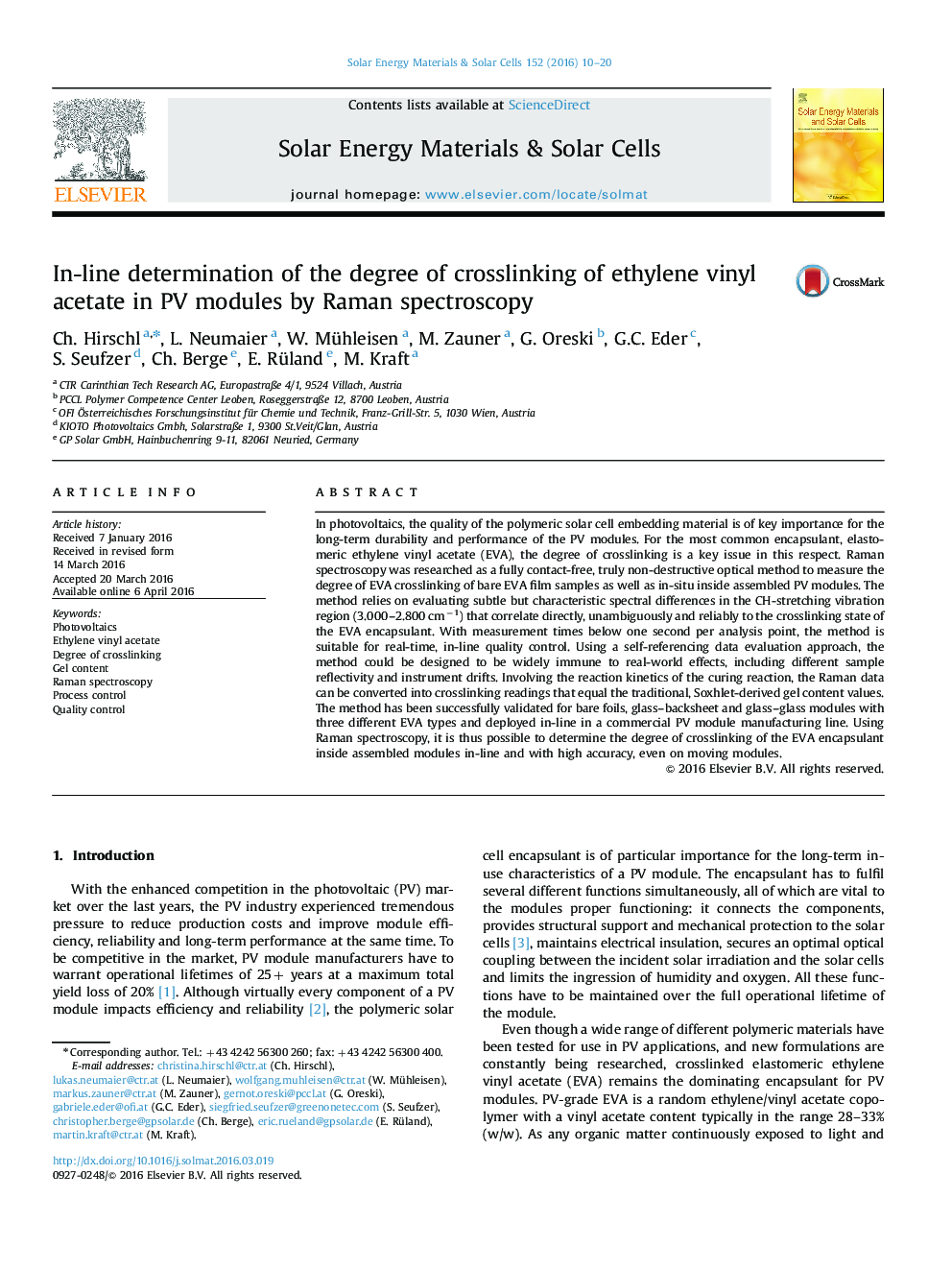| Article ID | Journal | Published Year | Pages | File Type |
|---|---|---|---|---|
| 77572 | Solar Energy Materials and Solar Cells | 2016 | 11 Pages |
•Raman spectroscopy has high analytical stability and accuracy to evaluate the crosslinking of the ethylene vinyl acetate.•Raman spectroscopy is a fully contact-free method to measure the degree of EVA crosslinking for all kinds of PV modules.•The method for the determination of crosslinking was also applied in-line in a fast moving photovoltaic manufacturing line.
In photovoltaics, the quality of the polymeric solar cell embedding material is of key importance for the long-term durability and performance of the PV modules. For the most common encapsulant, elastomeric ethylene vinyl acetate (EVA), the degree of crosslinking is a key issue in this respect. Raman spectroscopy was researched as a fully contact-free, truly non-destructive optical method to measure the degree of EVA crosslinking of bare EVA film samples as well as in-situ inside assembled PV modules. The method relies on evaluating subtle but characteristic spectral differences in the CH-stretching vibration region (3.000–2.800 cm−1) that correlate directly, unambiguously and reliably to the crosslinking state of the EVA encapsulant. With measurement times below one second per analysis point, the method is suitable for real-time, in-line quality control. Using a self-referencing data evaluation approach, the method could be designed to be widely immune to real-world effects, including different sample reflectivity and instrument drifts. Involving the reaction kinetics of the curing reaction, the Raman data can be converted into crosslinking readings that equal the traditional, Soxhlet-derived gel content values. The method has been successfully validated for bare foils, glass–backsheet and glass–glass modules with three different EVA types and deployed in-line in a commercial PV module manufacturing line. Using Raman spectroscopy, it is thus possible to determine the degree of crosslinking of the EVA encapsulant inside assembled modules in-line and with high accuracy, even on moving modules.
